

The Great 1714 Boizard Organ of St. Michel en Thiérache
2015-05-25 - Sample Set Spotlight 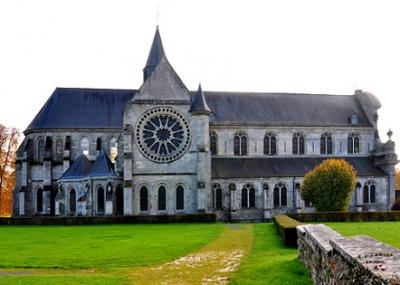
If terms like Tierce en taille, or Basse de Trompette, or Plein Jeu, both Grande and Petite, mean something to you, then you have an interest in organ music of the French Baroque! If you already have an interest in this unique and beautiful period and style of organ music, than you surely will have an interest in the unique and beautiful Jean Boizard organ of 1714, with its almost miraculous history, available to the Hauptwerk user through this magnificent Sonus Paradisi sample set. This gem, with its almost miraculous history, is believed to be one of the rarely preserved instruments representative of the era of Louis XIV. It perfectly expresses the language of the French organ of the late 17th century, of the so called Grand Siecle period.
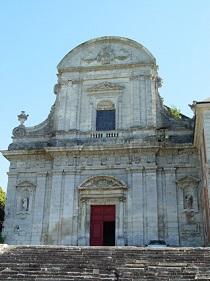
Saint-Michel-en-Thiérache Abbey is a former Benedictine abbey, located in Saint-Michel, in the Thiérache (Aisne, Picardy), between Paris and Brussels. The first chapel was founded in 693 A.D on the initiative of Ursmar. The abbey includes the church, the cloister and outbuildings, and dates back to the twelfth century. The abbey has since its inception undergone various reconstructions and rebuilds. The transept and the choir of the church, and the bays of the chapter house are Gothic and date from the late twelfth century. (In case you aren't familiar with the words "transept" and "choir", in brief, this is what they mean: Most great churches were built in "cruciform" shape, meaning in the shape of the cross, and this is what they would appear if you see them from above. If you think of the shape of the "traditional" cross, the "little horizontal arm" would be the transept. The "choir" is not referring to the group of singers, but rather to the area "in front of" the high altar. Again if we think of the cross, the "choir" would be the space between the very head or top of the cross, and the transept. While it's not referring to the people singing in the choir, it IS the area where the singers and some clergy would occupy during the services.)
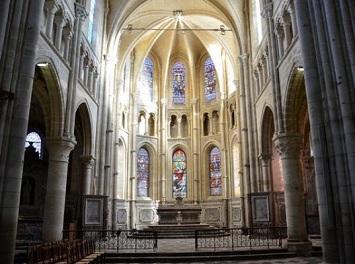
In the early seventeenth century, Father Jean-Baptiste de Mornat, a priest of Venetian origin arrived in France in the suite of Marie de' Medici, chaplain and counselor of Kings Henri IV and Louis XIII, and it was Abbot Mornat who restored the abbey. The facade and nave (The main body of the church where the laity sit. The "big" part of the cross.) date from the classic Abbot Mornat, and the monastic buildings around the cloister were rebuilt in the eighteenth century. An outstanding set of murals depicting the life of St. Benedict, and dating from the sixteenth century was unearthed in the north gallery of the cloister and was the subject of an important restoration.
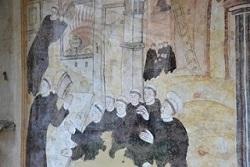
Relatively little is known about the organ builder Jean Boizard. We do know that he was established in the town of Sedan in northern France and that he built the organs in Donchery (1702), Avioth (1715), and Stenay (1716). This particular organ that we have to play on our HW instruments has an amazing history, and we can well imagine that the hand of God played a part in its survival, as the world tried to "take it away" on more than one occasion! It would be no exaggeration to say that it is almost a miracle that the instrument and its original system of pipes have survived down through the centuries. It escaped unscathed from fires in 1715 and, more recently, in 1971. It even managed to survive the French revolution, thanks to the sale of the abbey and its outbuildings to a certain Lalouette on May 4th 1791. It was spared once again during the First World War, even as metal was being requisitioned on every side to be melted down.
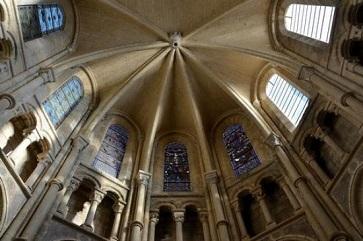
In 1885, the organ was completely revised by the organ builder Renault, who was established at Signy-le-Petit, and NOT the manufacturer of Renault automobiles! In 1919, choir and orchestra director Felix Raugel began to draw the public's attention to the organ's existence, and it was placed on France's list of historical monuments in 1950. Following the disastrous 1971 fire, the organ was dismantled and stored in the workshops of organ builders Haerpfer and Herman. In 1980, the two builders were commissioned to do a complete restoration true to original. For the restoration, the composition of the stops was kept identical to that of 1714, and the original quality of sound preserved; however, the temperament chosen was Lambert Chaumont. In 1990, organ builder Georg Westenfelder was appointed to service the instrument. He replaced the keyboards in 1992 and carried out a complete revision of the pipe system in 1996, including restoration of the wedge-shaped bellows. Since then, the temperament has been Rameau.
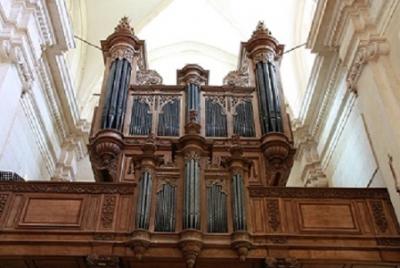
OK, so we've established the historical significance of the building, and the musical importance of the organ, but how does this "come through" in terms of Hauptwerk? Well, let's take a look at the instrument in detail, and see what this "late 17th century Grand Siecle" sound is all about! Some musicologists consider the Boizard organ to be a typical example of the mid-size organ from the time of Louis XIV. There are very few "audible and reliable" examples of these to have survived the past three centuries.
The Saint Michel organ is based upon the 8' Montre of the Grand Orgue (Great), visible in the central "facade" of the main case, and a 4' Montre of the Positif (Choir) organ, in its traditional location "behind" the organist, and "hanging" on the organ gallery rail. It has 31 stops distributed over four keyboards and a pedalboard - and that really IS a pedal BOARD, as you can see in the picture, as the keys are actually set IN a board! This is not the pedalboard designed to perfect your "heel and toe" playing, is it?
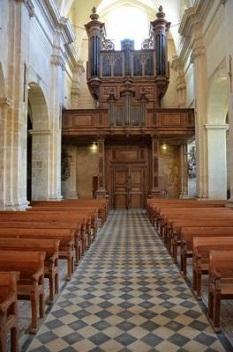
So, let's look at the divisions one by one, and see just what this specification produces. We'll start with the bottom or 1st manual, the Positif. This pipes in this division are behind the player, and the closest to the listener. On paper, I suppose this division doesn't "look" all that different from any other organ of the 18th century, but the sound is quite different from the German ideal. We have two 8' flutes, the Bourdon and the Flute allemande (German flute). The Bourdon, which is sweet and singing, is your main "foundation stop of the division, and it's essentially always used, as there is no other 8' to base the various sounds and choruses upon. The Flute allemande is an exquisite "solo" voice, that has a sound that as been described as "water transparent", and it is of a unique quality. It only goes to "middle D", so it can be used with Bourdon in a "divided keyboard" manner. The Montre 4' is bright and clear, but never harsh or "cutting". It is the only 4' of the division, so, it sometimes must "substitute" for the "missing" flute 4'. Next comes the Nasard 3', which is "full-toned" and blending perfectly with all other stops in the division. The Doublette 2' is bright and goes perfectly with the Bourdon 8' and Montre 4'.. It also has to serve as the 2' flute in the Cornet, and it does this well, although the fact that it is a "principal rank" and not a flute, as we would expect, is sometimes slightly "overly bright" to my taste. Both the Tierce 1 3/5' and the Larigot 1 1/3' are generously voiced and go perfectly with the other ranks to complete the Cornet. The Tierce is of course required, but the Larigot adds sparkle and "optional variety" to the traditional Cornet. The Fourniture III and the Cymbale II are mixtures of a sweet nature, and combine to make a perfect Petit Plein Jeu of shimmering effect. The Cromhorme 8' is a wonderful reed, with much color that lends itself to all "emotions" of the piece at hand. Whether "peasanty" and happy, or sad and sighing, this beautiful example of this essential rank is perfection. The "standard" Positif coupled to Grand Orgue is present, and always used in the full ensemble.
Moving up to the 2nd manual, the Grand Orgue, we find the backbone of the instrument, as we would expect. There is a complete flute chorus with Bourdon 16', Bourdon 8', Flute 4', and the Quarte de nasard 2'. The Bourdon 16' is the ONLY 16' on the entire organ, so, you aren't going to find this organ to be producing too much "thunder from down under," so to speak. The "Quarte de nasard 2' " is just a 2' flute, and only refers to pipe length. It has nothing to do with the Nasard! The flutes, together, or in any combination of stops are smooth and full in sound. There is nothing "hooty" or "rough" about them, but they all have a beautiful speech and articulation. Drawing the Bourdon 8' , Flute 4', Quinte 3' , Quarte de nasard 2' , and the Tierce 1 3/5' will produce a wonderful cornet separe, which is completely different from the noble and declamatory Grand Cornet V (which speaks only from "middle" C), and makes a perfect contrast to the Positif Cornet described above. The only thing missing is the Grosse Tierce 6', which is unfortunate, but not something that diminshes the quality or effect of the instrument. (The Grosse Tierce is an "odd and unique" sound used in mostly Duos and Trios. In essence it is like a "bass Cornet".) The mixtures, the Fourniture IV and the Cymbale III are like "big brothers" to the similar ranks on the Positif. The Fourniture is really a "Grande Fourniture", meaning that it really requires the Bourdon 16' to be used with it, or some odd effects may occur, as I believe it has the 6' series in it. The reeds are truly marvelous, and are outstanding examples of the period sound. The Trompette 8' is fiery and full-bodied, but still "smooth" enough to be used in a "lyric" manner. Like all French reeds (well, ALL reeds!), it is MUCH bigger at the bottom, and really "thins out" in volume and character in the higher registers. The Trompette 8' has a real "splat" to it, and is at its best in the Basse de Trompette. The Clairon 4' is colorful, and balances well with the Trompette. It is not "dominant," nor does it overwhelm the Trompette or the entire Grand jeux (Full organ). The Voix humaine 8' is a really fine example of this unique sound. Depending on your likes and taste, it either sounds beautiful or raucous. It is NOT like an E. M. Skinner Vox humana! On the real instrument, the coupler, Grand Orgue to Pedale is ALWAYS on. While it is "on by default," you can turn it off by the push of a virtual button... It's obviously more "historically accurate" to have it always on, but having it "off" gives you a lot more flexibility. Since I'm into "realism," I keep it on... ;-)

Moving up to the 3rd manual, the Récit, there is only one stop, the Cornet V, and it is always on. If you look at the main case, you'd find the Récit higher in the case, so that the speech of the stop is commanding. If you don't play much French baroque literature, your question would be: "What's the point of an entire division of only one stop, and that one always on?!?" It's a good and fair question. However, if you do play the literature you'll know that in almost any Grand dialogue, the reeds of the Positif are expected to dialogue with, or played together with the Cornet rank. Since the Cornet would be found on the Positif, and since you would have time to subtract all the big stops on the Grand orgue in order to "get to" its Cornet, you need ANOTHER Cornet - and you have one! The one on the Récit! It's tone is different from anything on the Positif or Grand orgue, and really adds to the "sonic effect," as you can tell, thanks to the quality of the sample set recording, that the sound is coming from "higher up" in the case.
If we move up to the 4th and top manual, we come to the Echo, and here we have another one stop division with yet another Cornet, this one also different in tonal characteristics than anything else on the organ. Again, we feel the sound come from still higher up in the case. We can play this rank as a solo, or in dialogue with other divisions, or we can do "double echos," meaning that we echo the main organ with the Cornet of the and then with the one on the echo! The Cornet of the Echo really isn't "softer" in sound, but the difference is a subtle change in color. It may seem a bit like overdoing it, but that's the sort of thing that music of the period demands, and the organ of St. Michel en Thierache has got what it takes to fulfill the needs, colors, and effects of the literature.
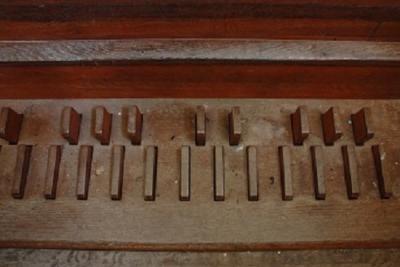
Finally, let's take a look at the Pedale division. To our modern eyes and ears, it looks VERY small, but for the period, this is a very full division! There is a Flute 8', a Flute 4', a Trompette 8', and a Clarion 4'. These stops, particularly the flutes are BIG, rather like "fluty principals". They need to be generous in scale, as they are mostly used for pedal points. The "independent" pedal is rare, but not entirely absent, from music of the period. The reeds have a lot of "umph", especially since these are all in the lowest register. The Trompette and Clarion are used to play the cantus firmus in works like some of the Grand Plein Jeu of Couperin, so, there sound must "cut through" the full mixtures of the manuals. In this case, the reeds have enough power, and their smooth grandeur complets the noble effect. As already mentioned the Grand Orgue to Pedale is always on by default, but there are no other couplers.
The compass of the Positif and Grand Orgue are 4 octaves (with the low C-sharp "added"), while the Cornet speaks starting at "middle-C", and Echo Cornet speaks starting a "tenor-G", below middle-C). The compass of the Pedale is two octaves (with low C-sharp added).
The virtual console and controls are not only easy to use, but are beautiful, and help to create the "mood" when playing.
The tuning and temperament of the organ have been painstakingly recreated by Sonus Paradisi. In discussing the features of the sample set, SP says: "The organ is tempered to a rather harsh meantone temperament (I don't think it's "harsh"!) and it is pitched about a tone lower than the modern pitch. When recorded, its height was about a=392 Hz. Although the "Original Organ Tuning" is available in Hauptwerk, it will not work with the extended compass of the manuals and the pedal. Instead, consider using the dedicated St. Michel temperament chart which will be installed together with the sample set. This temperament chart also features the original tuning of the instrument, while re-pitching the extended keys perfectly."
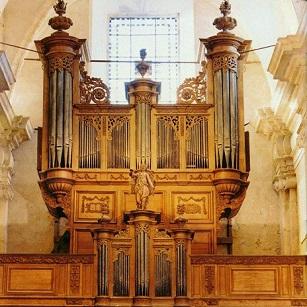
So, is the sample set of the grand Boizard organ of the Abbey of St. Michel en Thiérache for you? Well, that depends on whether you have an interest and love of music of the great French Baroque period! If you do, this sample set is absolutely indispensable to your organ library! In a period that "names" the pieces by the stops used, the grand Boizard organ at St. Michel has everything that you could possibly want or need. My appreciation of this music was almost immediate. Odd perhaps that someone such as myself, with such a love for and commitment to the great English cathedral tradition and sounds would find SO much in this unique and highly colorful music, but that's what happened! The more I play it, the more I see in it, and get out of it.
I remember, the first time I heard a "French Cornet" was upon a 1928 Austin, with the "Cornet" being composed of the Great Doppelflute 8', the Nazard 2 2/3 from the Choir coupled with the sub and super couplers coupled to the Great, and the Fugara 4' from the Solo coupled to all of that! I can only begin to imagine the excitement I would have felt if I'd had this HW set to play it on!
If you think you have the desire to really get into this music, I would STRONGLY urge you to get this sample set! The sound is magnificent and in no way will you be disappointed. You will be thrilled!
I think that ALL serious music schools and conservatoires should have a HW instrument with sample sets like this available - NOT IN PLACE OF a fine pipe organ, but IN ADDITION TO one! Maybe the days of the Austin that I described above are over, but what a fabulous learning device for students to be able to play Couperin or Dandrieu on an organ that sounds like this one! A teacher can TALK about the sound of a French Trompette all day, but still, even the most "creative imaginer" can't "hear" it. One "splat" on the "low-D" of this Trompette, and EVERYTHING becomes instantly clear!
This is one of my very favorite sample sets, and I am grateful and thankful to Sonus Paridisi for the spectacular accomplishments and impeccable standard!
CONGRATULATIONS, Sonus Paridisi on a truly SPECTACULAR job!
David Lamb, Agnus_Dei
Comments
However, there may be a wrong word in your first paragraph:"than you have an interest in organ music of the French Baroque! " I think the work "than" should be replaced by "then", do you think so?